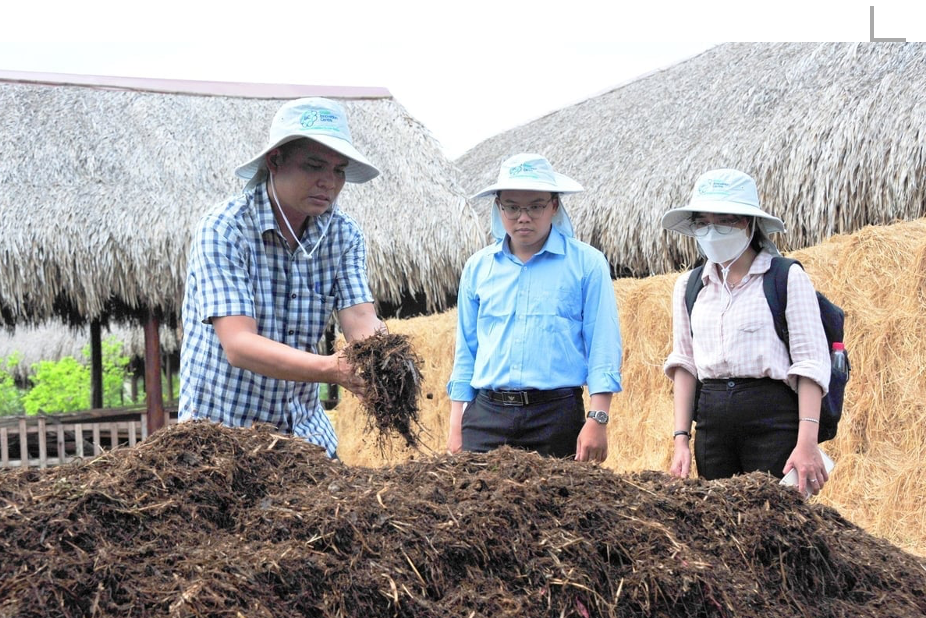Crop sector to cut greenhouse gas emissions by at least 15% by 2035
G+ ( en.mae.gov.vn/crop-sector-to-cut-greenhouse-gas-emissions-by-at-least-15-by-2035-9043.htm)
The Ministry of Agriculture and Environment has just issued the Crop Production Development Plan for 2025-2035, aiming to steer the sector toward a low-emission pathway, ensure food security, and strengthen the competitiveness of Vietnamese agricultural products.
A key highlight of the plan is that by 2035, crop production must contribute to at least a 15% reduction in greenhouse gas (GHG) emissions compared with 2020 levels.
The Ministry will also develop and issue a “Low-Emission” certification label for crop products. Each province and city will be required to implement at least one to two scalable low-emission production models, while a minimum of 15 pilot projects will be launched to develop carbon credits eligible for participation in international carbon markets.
The plan’s long-term vision to 2050 is even more ambitious: 100% of major crop areas will adopt sustainable cultivation practices; all emission data will be digitized and connected to the national monitoring system; and the “Low-Emission” label will become widely recognized across key commodity chains, positioning Viet Nam as a regional leader in climate-responsible agriculture.

According to the plan, part of the low-yield rice cultivation area will be converted to high-value dryland crops or integrated with aquaculture. The “one rice crop – one upland crop” rotation model will be encouraged to improve soil health and reduce emissions. For perennial crops, the Ministry will prioritize varieties that are both economically viable and effective in carbon sequestration.
Low-emission farming techniques will also be standardized. Rice cultivation will apply alternate wetting and drying (AWD) irrigation and the System of Rice Intensification (SRI). The use of organic, microbial, and slow-release fertilizers will gradually replace inorganic fertilizers, while chemical pesticides will be restricted in favor of biological control solutions. Digital technologies — including sensors and soil moisture monitoring software — will assist farmers in managing water, fertilizer, and pesticide use more efficiently, thereby reducing both costs and emissions.
Demonstration models will be deployed in key production zones, connecting farmers, cooperatives, and enterprises. These models will apply low-emission technologies while implementing Measurement, Reporting, and Verification (MRV) systems aligned with international standards.
The Ministry will establish a national crop emissions database, categorized by ecological zone, crop type, and cultivation technique, to integrate with the national greenhouse gas inventory system. This will ensure data transparency and support Viet Nam’s participation in the carbon market.
The plan targets the training of at least 3,000 technical officers, extension workers, and lead farmers in low-emission cultivation, MRV, and carbon credit management. It also calls for the publication of five standardized communication toolkits to promote behavioral change toward sustainable production practices.
Seven key solution groups are proposed, ranging from institutional improvement and development of low-emission cultivation criteria, to financial incentives for farmers, cooperatives, and businesses. The plan encourages the application of new technologies such as artificial intelligence (AI), precision agriculture, and biochar production from agricultural residues.
Financial resources will combine state budget funds, private investment, and international support. Cooperation with organizations such as FAO, World Bank, GIZ, JICA, UNDP, and IFAD will be strengthened to mobilize technical assistance, financial resources, and management experience.
Looking further ahead to 2050, the goal is for all major crop areas to follow sustainable cultivation practices, with fully digitized emission data linked to the national system and “Low-Emission” labeling applied across all major sectors—helping Viet Nam become a regional pioneer in climate-responsible agriculture.
Ba Thang